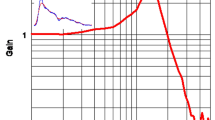Abstract
We wished to assess the accuracy of a modified form of Trigg's Tracking Variable (TTV) at detecting the onset of changes in systolic blood pressure. A computer model generated systolic blood pressures which changed to a new value after period of stability. A separate algorithm based on TTV indicated when a ‘significant’ change had been detected. This signal occurred when TTV had exceeded a set limit (0.8–0.99) a predetermined number of times (1–10). Five anaesthetists were shown 40 sets of data generated by same the computer model and asked to indicate the onset of changes. The greatest number of changes (94.1%) were correctly identified when TTV exceeded 0.92 on 4 consecutive determinations. The onset of the trend was detected after an average delay of 140s. The anaesthetists correctly detected 85% of the changes after an average delay of 162s. There was no statistically significant difference between the anaesthetists and the algorithm, although only one anaesthetist performed better than the modified TTV. The modified TTV detected changes in simulated invasive systolic blood pressures faster and more accurately than four of a group of five anaesthetists. Such simple trend detection systems may be useful as ‘advisory’ alarms.
Similar content being viewed by others
References
Sainsbury DA. An object-oriented approach to data display and storage: 3 years experience, 25,000 cases. Int J Clin Monit Comput 1993; 10: 225–33.
Lewis CD. Statistical monitoring techniques. Med. Biol. Eng. 1971; 9: 315–23.
Avant RK, Charlton JD. A critical review of trend-detection methodologies for biomedical monitoring systems. Crit Rev Biomed. Eng. 1990; 17: 621–59.
Kennedy RR, Baker AB. Analysis of uncertainty in theoretical methods of cardiac output measurement using the ‘Monte Carlo’ technique. Br J Anaesth. 1993; 71: 403–9.
Riegelman RK, Hirsch RP. Studying a Study and Testing a Test. How to Read the Medical Literature. Second Edition. Boston: Little, Brown and Company, 1989.
Myles PS, Williams NJ, Powell J. Predicting outcome in anaesthesia: understanding statistical methods. Anaesth. Int. Care 1994; 22: 447–53.
Bovill JG. Alarm systems. In: Kenny GNC, editor. Automated Anaesthetic Records. London: Balliere Tindal, 1990: 193–200.
Westenskow DR. Alarms. In: Saidman LJ, Smith NT, editors. Monitoring in Anesthesia. Boston: Butterworth-Heinemann, 1993: 475–90.
Van Oostrom JH, Gravenstein C, Gravenstein JS. Acceptable ranges for vital signs during general anesthesia. J Clin Monit 1993; 9: 321–5.
Sittig DF, Factor M. Physiologic trend detection and artifact rejection: a parallel implementation of a multi-state Kalman filtering algorithm. Comput Meth Progr Biomed 1990; 31: 1–10.
Makivirta A, Koski EMJ. Alarm-inducing variability in cardiac postoperative data and the effects of prealarm delay. J Clin Monit 1994; 10: 153–62.
Pan PH, Van der Aa JJ, Gomez FJ Van Oostrom JH, Beneken JEW, Gravenstein JS. Smart anesthesia monitoring system. Anesthesiology 1990; 73: A450.
Orr JA, Westenskow DR. A breathing circuit alarm system based on neural networks. J Clin Monit 1994; 10: 101–9.
Cohn AI, Rosenbaum SH, Miller PL. An alternative approach to intelligent haemodynamic monitoring. Anesthesiology 1990; 73: A541.
Hope CE, Lewis CD, Perry IR, Gamble A. Computed trend analysis in automated patient monitoring systems. Br J Anaesth. 1973; 45: 440–8.
Bruner JMR. On the calibration of artifacts. J Clin Monit 1994; 10: 143–5.
Monk CR, Millard RK, Hutton P, Prys-Roberts C. Automatic arterial pressure regulation using isoflurane: comparison with manual control. Br J Anaesth 1989; 63: 22–30.
Murchie CJ, Kenny GNC. Comparison among manual, computer-assisted and closed-loop control of blood pressure after cardiac surgery. J Cardioth Anesth 1989; 3: 16–9.
Watt RC, Maslana ES, Mylrea KC. Alarms and anesthesia. Challenges in the design of intelligent systems for patient monitoring. IEEE Eng Med Biol 1993; 1993: 34–41.
Westhorpe RN, Glass NM. The role of the anaesthetist in patient monitoring. Anaesth Int Care 1988; 16: 47–9.
Doyle DJ, Lee M. Evaluation of anesthesia trend display methods by ROC analysis. Can J Anaesth 1992; 39: A37.
Author information
Authors and Affiliations
Rights and permissions
About this article
Cite this article
Kennedy, R.R. A modified Trigg's Tracking Variable as an ‘advisory’ alarm during anaesthesia. J Clin Monitor Comput 12, 197–204 (1995). https://doi.org/10.1007/BF01207199
Accepted:
Issue Date:
DOI: https://doi.org/10.1007/BF01207199




